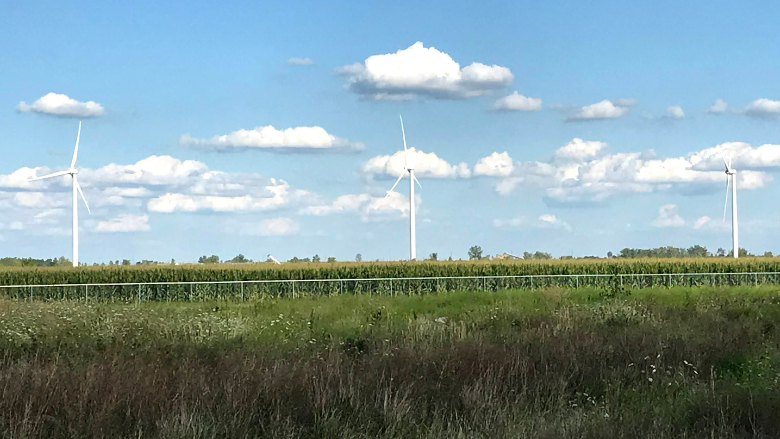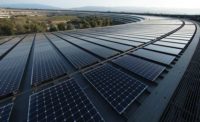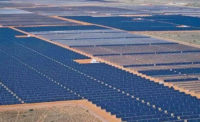Cement producer Holcim US has signed on with the U.S. Dept. of Energy’s Better Climate Challenge with a pledge to cut greenhouse gas emissions over 10 years. The Chicago-based U.S. business of Swiss cement giant Holcim Ltd. says it is aiming to cut carbon dioxide emissions from its 13 U.S. plants by at least 25% and power them entirely with renewable energy by 2033.
Holcim has already been moving toward renewable power. The company's Paulding, Ohio, plant has three wind turbines that eliminate the emission of 9,000 tons of carbon dioxide each year, says the company. A solar field at its Hagerstown, Md., plant supplies more than 28% of that plant’s energy and cuts the equivalent emission of 14,406 tons of CO2.
 The Paulding, Ohio, cement plant has three wind turbines that reduce greenhouse gas emissions by 9,000 tons of carbon dioxide each year. Photo courtesy of Holcim US
The Paulding, Ohio, cement plant has three wind turbines that reduce greenhouse gas emissions by 9,000 tons of carbon dioxide each year. Photo courtesy of Holcim US
The Dept. of Energy initiative challenges companies to “set ambitious, portfolio-wide [greenhouse gas] emission reduction goals.” Holcim is the first cement producer to join the Better Climate Challenge, a DOE spokesperson says.
In 2014 it was also the first cement producer to achieve DOE's Better Plants Challenge goal. That program is aimed at making energy efficiency improvements. After Holcim met its initial 25% energy intensity improvement goal, officials say the company upped its goal to 30%.
Michael LeMonds, Holcim US chief sustainability officer and vice president of environmental, social and governance, said in a statement that the cement producer “has worked hard to lower CO2 and find alternative energy sources to replace fossil fuels.”
To meet the new goals, Holcim is planning to conduct reviews at all its cement plants to find ways to cut their carbon footprint. As ENR previously reported, other Holcim subsidiaries have looked into strategies including the use of autonomous electric vehicles, new uses for construction debris and new cement blends that reduce environmental impacts. Under a DOE grant, the company also is researching carbon capture utilization storage at its plants in Portland, Colo., and Ste. Genevieve, Mo.






Post a comment to this article
Report Abusive Comment